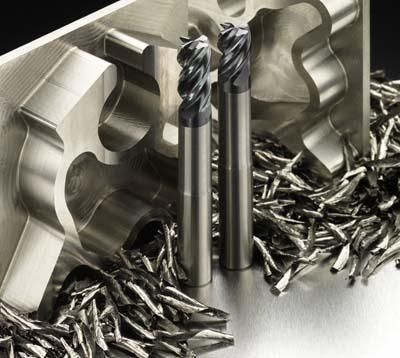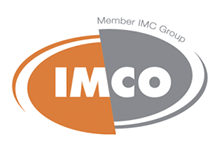
The second-generation version of the original POW-R-FEED M9 Series, the new POW-R-FEED M924 end mill, is available from IMCO Carbide Tool.
Designed especially for production environments, the POW-R-FEED M924 end mill was tested in-house, removing 470 percent to 907 percent more metal per tool than a comparable competitor's tool in 17-4 PH stainless steel and 4140 steel, respectively. Even in titanium, the M924 removed 46 percent more material than the competitor's tool. "We are delighted with the new POW-R-FEED M924; it's just a powerhouse for productivity," said Perry Osburn, president of IMCO.
"The M924 outperforms even the original POW-R-FEED M904 in every metal we've tested, and if you know machining, you know the M904 is no slouch. That's why we highly recommend the M924 for higher-volume operations."
IMCO Sales Manager Tim Elfreich concurred: "When speed and cycle time are critical, the M924 is a perfect fit." He emphasized the importance of the M924's two new features: an AlCrNX engineered coating and reinforced, optimized cutting edges for longer tool life. Added to the advanced core construction, optimized rake and relief angles, free cutting action and versatility of the M904, Elfreich said, "Those new advances take metal removal rates and tool life to a whole new level."
Known for its advanced technology, IMCO incorporated the latest in cutting tool science in developing the new POW-R-FEED M924. Optimized rake and relief angles and free cutting action make even higher feed rates achievable, Elfreich explained. "It has a 38 degree helix, creating a higher-than-usual shear plane," he said. "The result is a much higher feed rate compared with other "general-purpose" cutting tools."
Reinforced cutting edges are stronger to resist chipping and excessive wear, even in more demanding applications. The new AlCrNX engineered coating, he said, has been shown to offer better heat protection for significantly longer tool life.
"I've said it before: we only introduce a tool when we're sure there are real, reliable benefits for our customers," Osburn said. "The POW-R-FEED M924 is the real deal. It'll help end users put more metal on the floor and more profits in their pockets."
Contact Details
Related Glossary Terms
- feed
feed
Rate of change of position of the tool as a whole, relative to the workpiece while cutting.
- milling machine ( mill)
milling machine ( mill)
Runs endmills and arbor-mounted milling cutters. Features include a head with a spindle that drives the cutters; a column, knee and table that provide motion in the three Cartesian axes; and a base that supports the components and houses the cutting-fluid pump and reservoir. The work is mounted on the table and fed into the rotating cutter or endmill to accomplish the milling steps; vertical milling machines also feed endmills into the work by means of a spindle-mounted quill. Models range from small manual machines to big bed-type and duplex mills. All take one of three basic forms: vertical, horizontal or convertible horizontal/vertical. Vertical machines may be knee-type (the table is mounted on a knee that can be elevated) or bed-type (the table is securely supported and only moves horizontally). In general, horizontal machines are bigger and more powerful, while vertical machines are lighter but more versatile and easier to set up and operate.
- rake
rake
Angle of inclination between the face of the cutting tool and the workpiece. If the face of the tool lies in a plane through the axis of the workpiece, the tool is said to have a neutral, or zero, rake. If the inclination of the tool face makes the cutting edge more acute than when the rake angle is zero, the rake is positive. If the inclination of the tool face makes the cutting edge less acute or more blunt than when the rake angle is zero, the rake is negative.
- relief
relief
Space provided behind the cutting edges to prevent rubbing. Sometimes called primary relief. Secondary relief provides additional space behind primary relief. Relief on end teeth is axial relief; relief on side teeth is peripheral relief.
- shear plane
shear plane
Plane along which the chip parts from the workpiece. In orthogonal cutting, most of the energy is used to create the shear plane.

